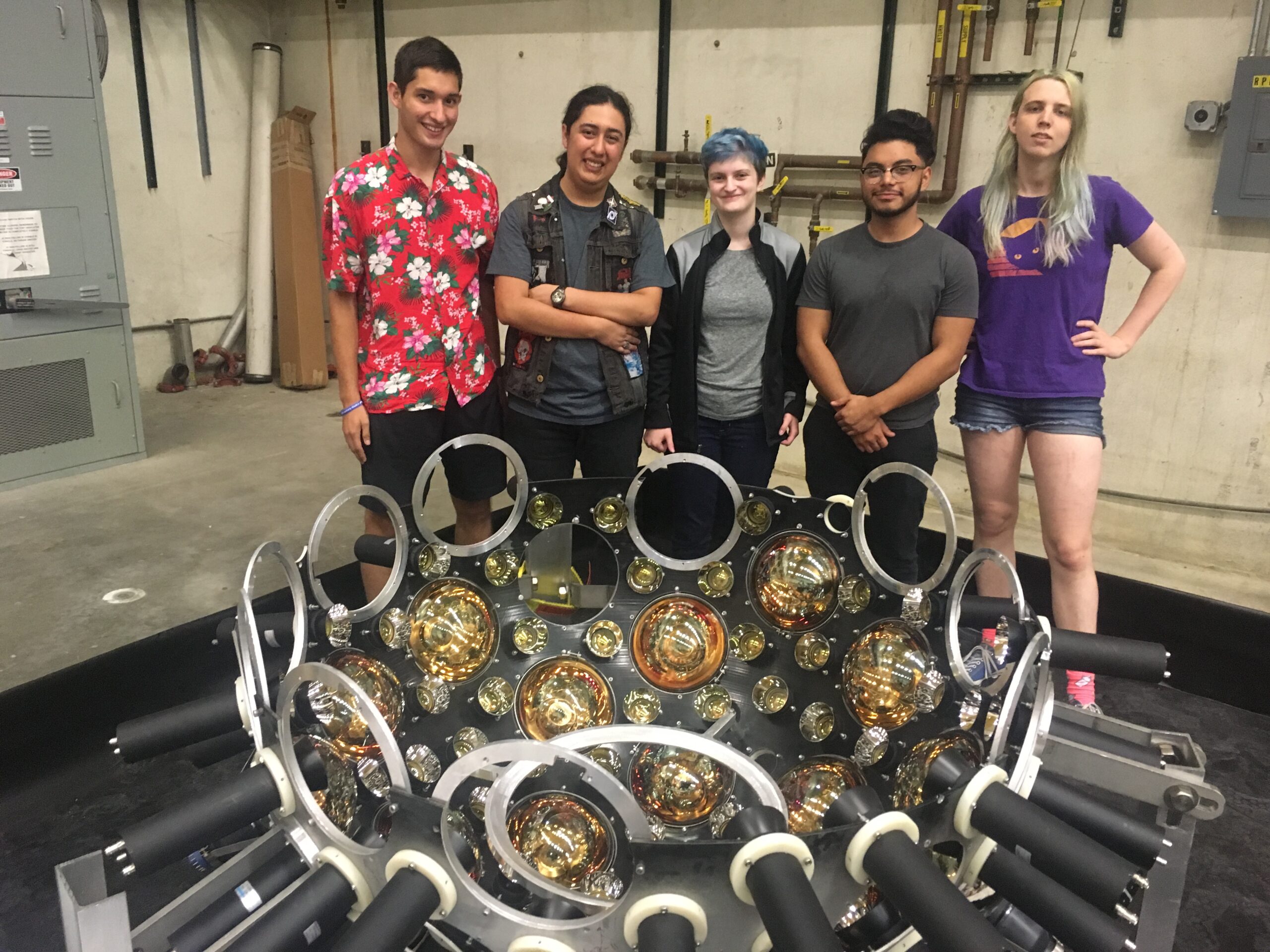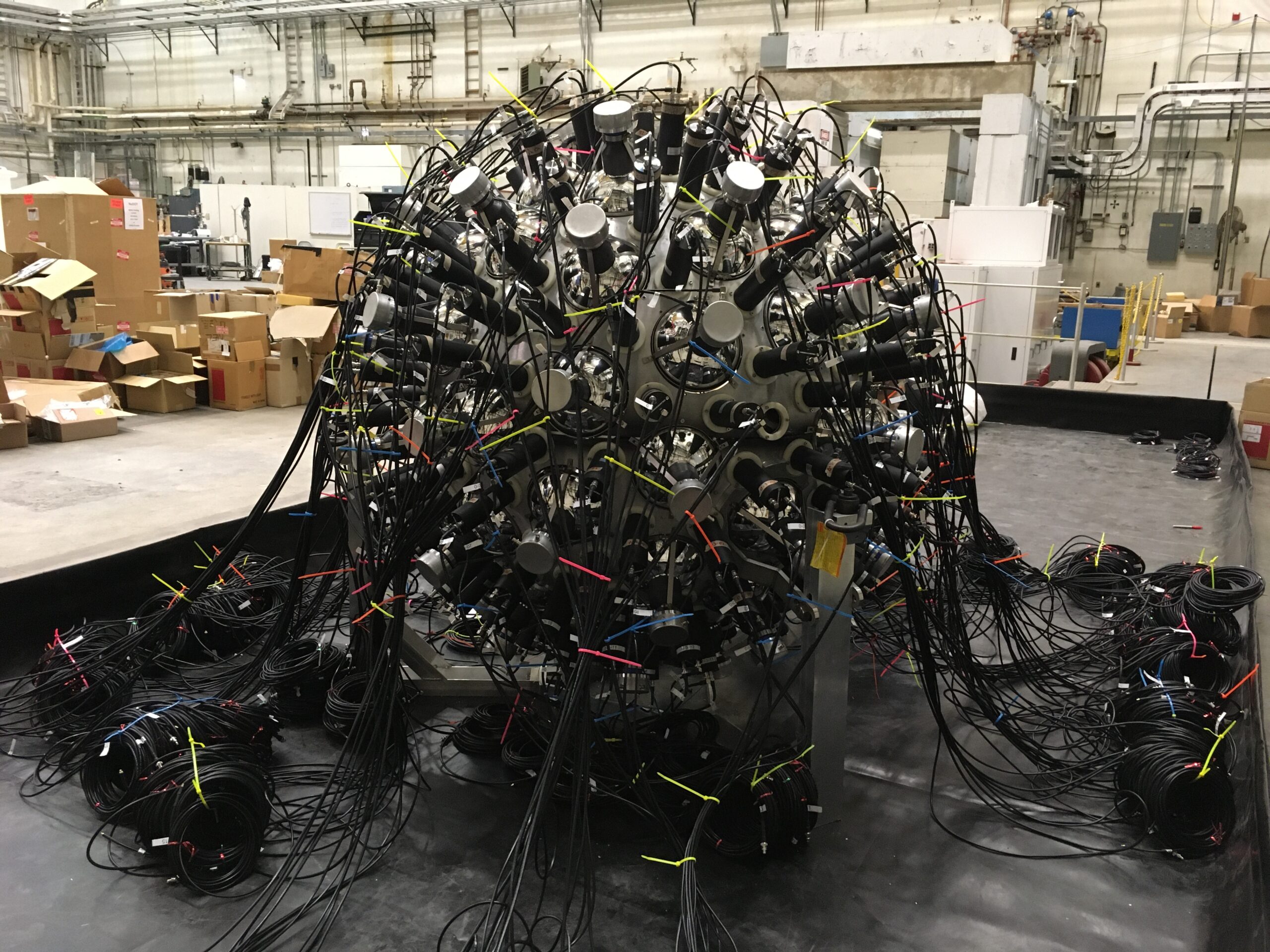NuDot
Large liquid scintillators are one of the only feasible technologies if we need to scale 0νββ experiments to masses larger than 1 ton. As we move to these kiloton-scale experiments, however, we encounter new background risks that scale with the volume of the detector, like scattering of solar neutrinos.
One way to reject these background events is to count the number of charged particle tracks — neutrinoless double-beta decay features two electrons, and these background events have just one outgoing electron. In liquid scintillator the electrons move faster than the speed of light, emitting directional “shockwaves” of Cherenkov light along their direction of travel. Using fast-timing photomultiplier tubes, we can distinguish this light from the far-more-abundant and isotropic scintillation light. NuDot is a 1/2-ton proof-of-concept liquid scintillator experiment that is testing this and some of the other techniques we’ll need to build kiloton-scale detectors that aren’t limited by backgrounds. Other work on NuDot focuses on the development of new fast-timing photodetectors and data acquisition systems, testing quantum dots as wavelength shifters and as a means to load the double-beta decay isotope, and on developing machine learning algorithms for event recognition.
The Gruszko group leads NuDot, which has been housed at Triangle Universities Nuclear Laboratory (TUNL) starting in 2020.

